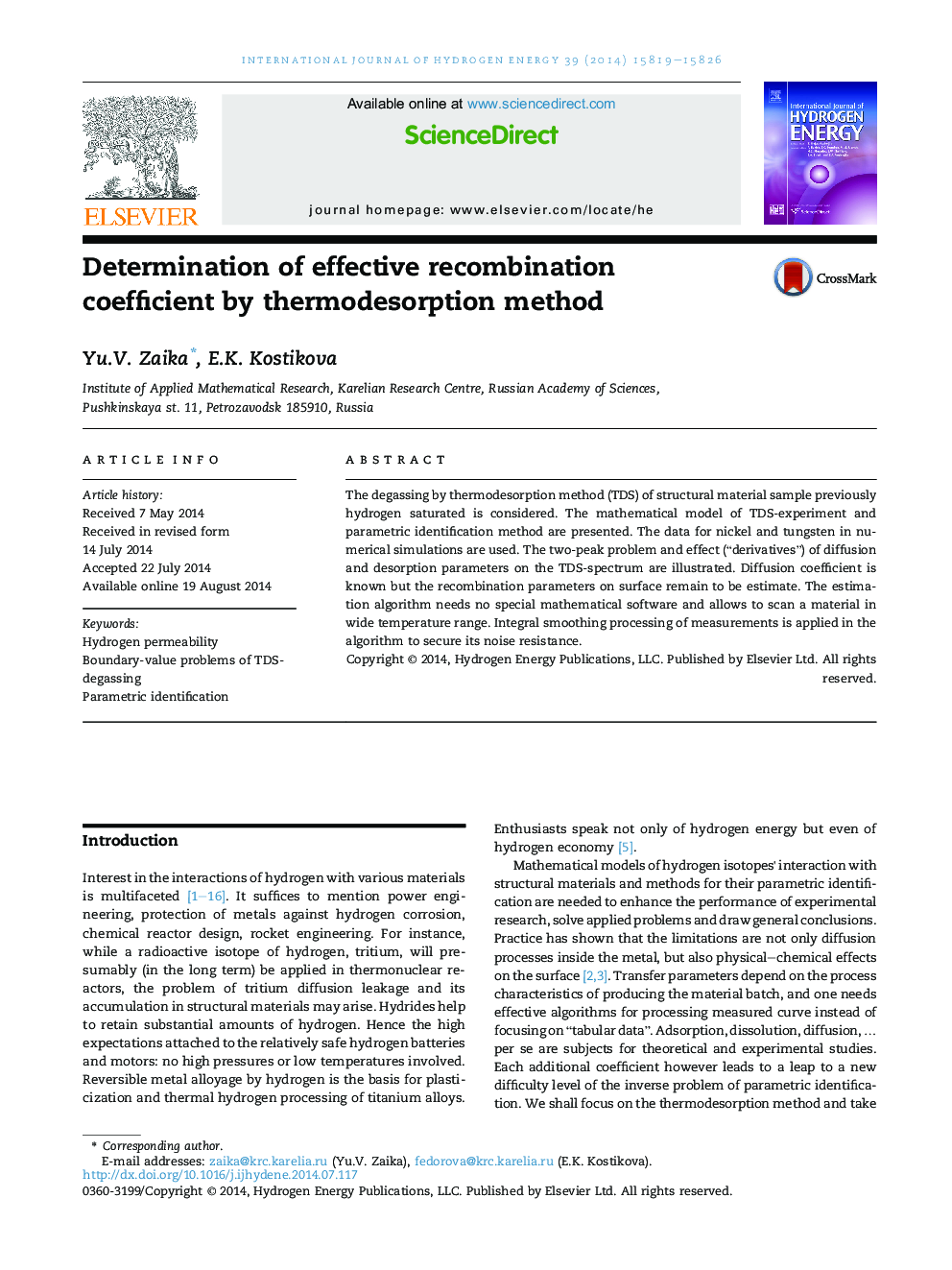| Article ID | Journal | Published Year | Pages | File Type |
|---|---|---|---|---|
| 1272421 | International Journal of Hydrogen Energy | 2014 | 8 Pages |
•Desorption and diffusion activation energies interplay leads to several TDS-peaks.•The effect of diffusion and desorption parameters on TDS-spectrum is illustrated.•An approach to estimating desorption parameters is suggested.•Integration of measurements is applied to noise resistance parameter identification.
The degassing by thermodesorption method (TDS) of structural material sample previously hydrogen saturated is considered. The mathematical model of TDS-experiment and parametric identification method are presented. The data for nickel and tungsten in numerical simulations are used. The two-peak problem and effect (“derivatives”) of diffusion and desorption parameters on the TDS-spectrum are illustrated. Diffusion coefficient is known but the recombination parameters on surface remain to be estimate. The estimation algorithm needs no special mathematical software and allows to scan a material in wide temperature range. Integral smoothing processing of measurements is applied in the algorithm to secure its noise resistance.
